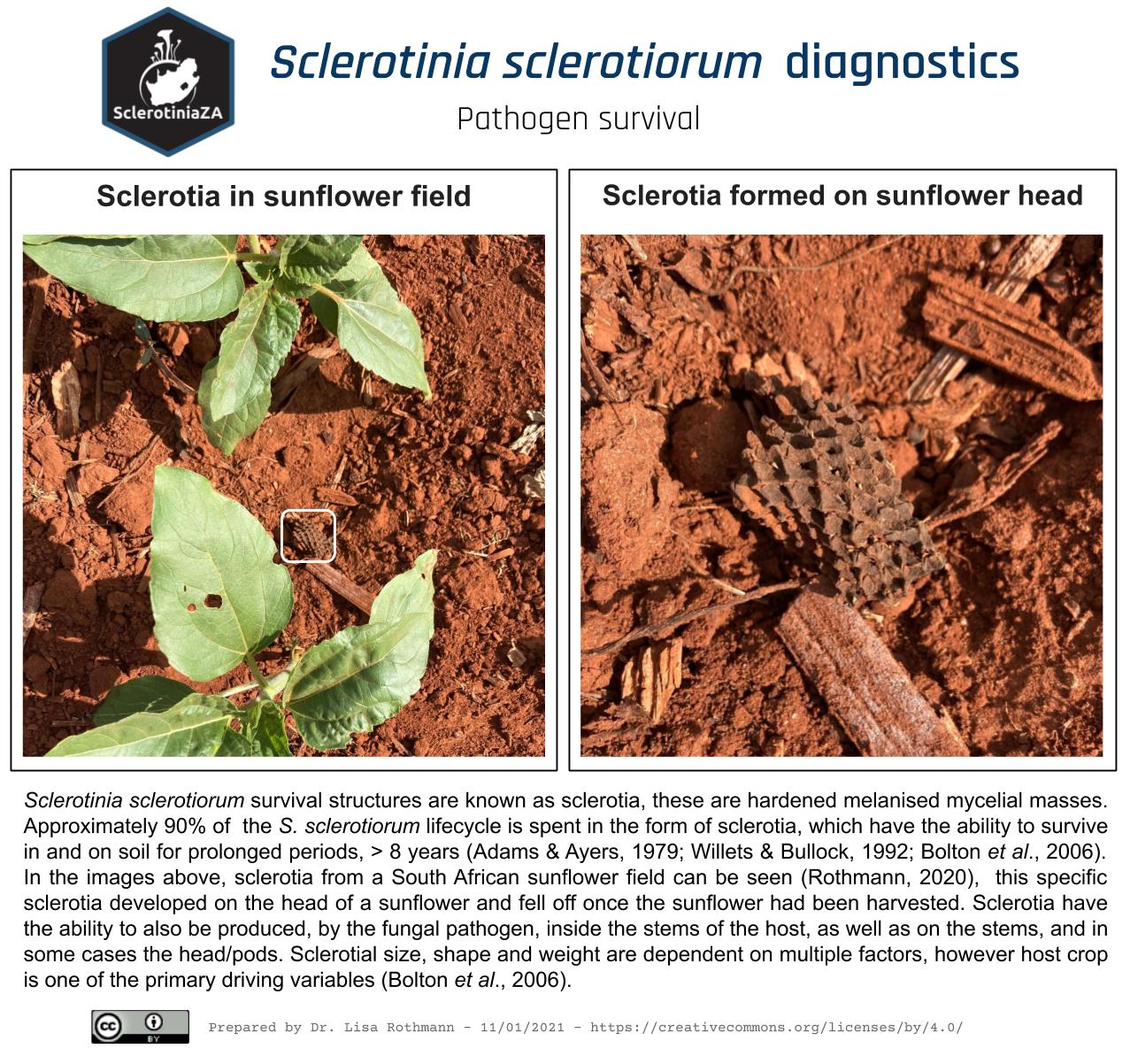
Sclerotia - the survival of Sclerotinia sclerotiorum
Sclerotinia sclerotiorum survival structures are known as sclerotia, these are hardened melanised mycelial masses. Approximately 90% of the S. sclerotiorum lifecycle is spent in the form of sclerotia, which have the ability to survive in and on soil for prolonged periods, > 8 years (Adams & Ayers, 1979; Willets & Bullock, 1992; Bolton et al., 2006). In the images above, sclerotia from a South African sunflower field can be seen (Rothmann, 2020), this specific sclerotia developed on the head of a sunflower and fell off once the sunflower had been harvested. Sclerotia have the ability to also be produced, by the fungal pathogen, inside the stems of the host, as well as on the stems, and in some cases the head/pods. Sclerotial size, shape and weight are dependent on multiple factors, however host crop is one of the primary driving variables (Bolton et al., 2006).
citation list
- Adams, P.B. and Ayers, W.A. 1979. Ecology of Sclerotinia species. Phytopathology 69: 896-899.
- Bolton M.D., Thomma, B.P.H.J. and Nelson, B.D. 2006. Sclerotinia sclerotiorum (Lib.) de Bary: Biology and molecular traits of cosmopolitan pathology. Molecular Plant Pathology 7: 1-16.
- Willetts, H.J. and Bullock, S. 1992. Developmental biology of sclerotia. Mycological Research 96: 801-816.
Author: Lisa Rothmann
Universtiy of the Free State UFS
Department of Plant Science, Plant Pathology